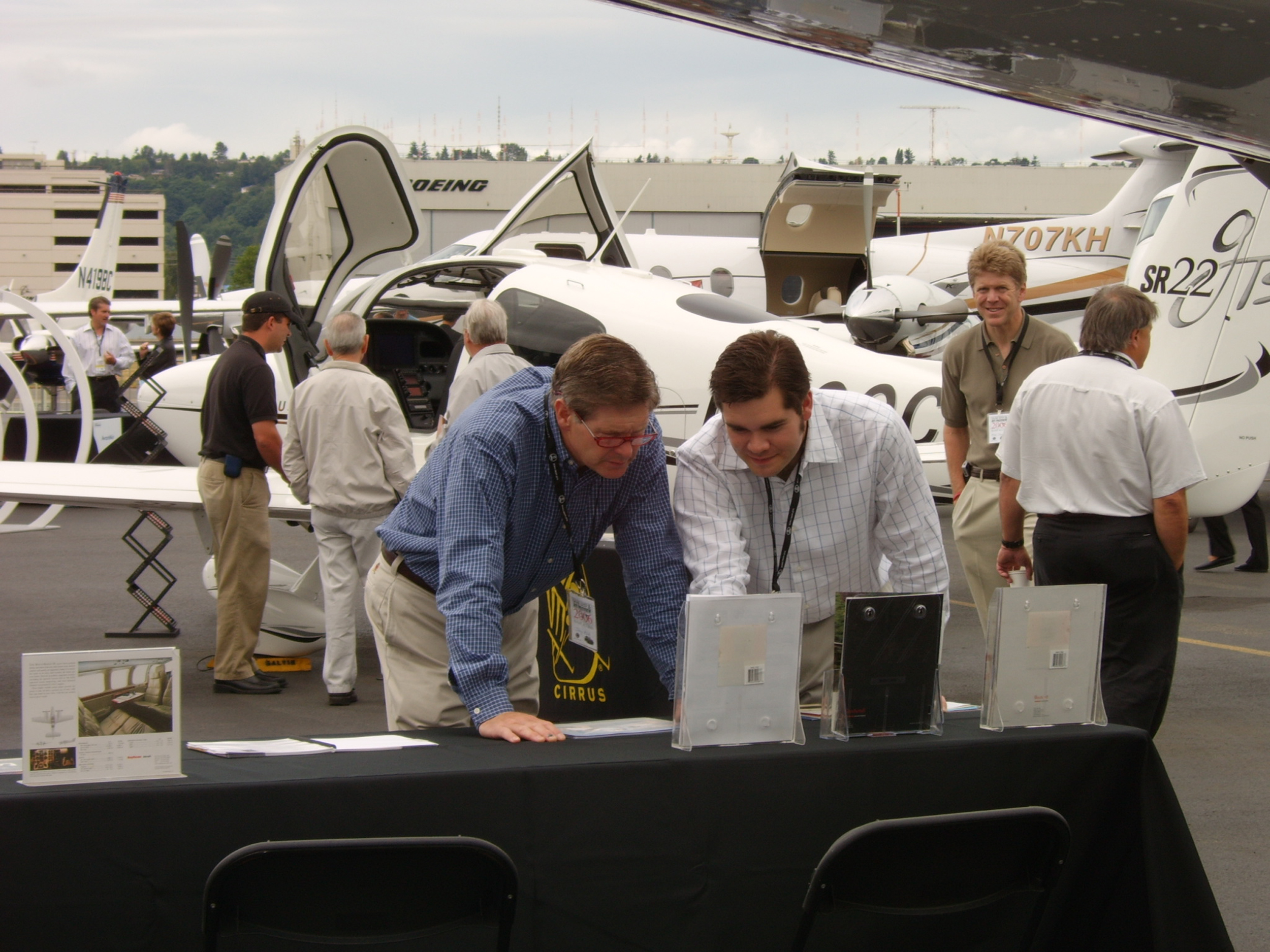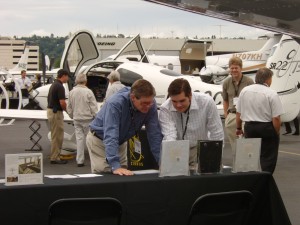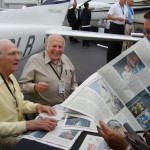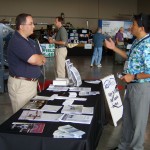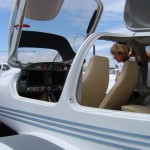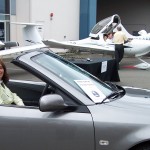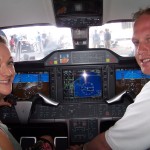By Bill Stansbeary
The Seattle sun rose over Boeing Field (FBI) on the morning of July 13, allowing more than 1,200 curious guests to see the latest lineup of private and business travel aircraft at the Saab Business Aircraft & Jet Preview. The ramp at Galvin Flying Services was staged with nearly 30 aircraft on static display as well as a full lineup of new Saab automobiles. Saab provided free test drives during the show.
Technically advanced aircraft are now entering the general aviation fleet in large numbers. The categories are newly designed aircraft, newly manufactured classic design aircraft equipped with new avionics, and retrofitted existing aircraft of varying ages.
General aviation pilots are now undergoing the transition that the airlines and corporate pilots did in the recent past. The use of the “glass cockpit,” integrated systems and computer-driven simulation is now part of the evolution of business travel. These technically advanced aircraft are equipped with new-generation avionics that take full advantage of computing power and modern navigational aids to improve pilot positional awareness, system redundancy and information about traffic, weather and terrain.
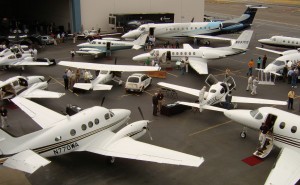
An overview of the 2006 Saab Business Aircraft & Jet Preview at Boeing Field from the roof of a Galvin Flying hangar. Exhibitor booths and breakfast, lunch and afternoon wine and cheese were in the open hangar at upper left.
Look closer inside these aircraft cockpits and you will find at least a moving map display, an IFR-approved global positioning system navigator and a decent autopilot. Many new aircraft will also have a primary flight display and a multifunction display to replace the traditional “steam gauges.”
In terms of new production, these technically advanced aircraft have clearly arrived at the Airport Journals’ Business Aircraft & Jet Previews. Some are completely new designs from Columbia, Cirrus, Diamond, Adam, ATG, Embraer, Bombardier, Cessna, Raytheon, Eclipse, Piaggio and Gulfstream. Other aircraft arriving on the Airport Journals scene are updated versions of classic aircraft such as the Cessna 182 and 206, Piper Saratoga, Beechcraft Bonanza, Mooney and Learjet 20 and 30 series.
This evolution of technically advanced aircraft goes beyond just the hardware and software changes. There is now a new mindset for pilots and aviators in our real world of flight today. This encompasses an updated view of flying with style and substance. Large amounts of information need to be processed rapidly to keep safety first. While the basic stick and rudder skills are still important in aviation, now the “systems manager” mental talent is evolving.
The new systems are known as “glass cockpit” and “glass cockpit aircraft” with “steam gauge” instruments and cathode ray tube displays being replaced by liquid crystal displays. There is now a much larger colorful picture of flight presented that has forever changed the basic six-instrument scan that three generations of pilots have come to know so well.
To see more of this evolution in flight, visit [http://www.airportjournals.com].
- At lunch, attendees had their choice between seven different sandwiches.
- Cliff Garl (left), who recently soloed, and his instructor, Joe Bennett, were on hand to autograph an article on Garl in Airport Journals at the Northway Aviation exhibit.
- AcuWings owner Baha Acuner listens to the needs of a potential customer for his Renton Airport-based flight training center.
- Galvin Flying’s twin engine Diamond Twin Star aircraft gets a close inspection.
- Joy Pothan, sales representative for McCann Motors, Cadillac-Saab-Hummer, gave test drives in the Saab Aero convertible to The Museum of Flight at Boeing Field.
- Linsey Lips, Airport Journals, and Scott Jefvert, Galvin Flying line service sales, look over the Embraer Phenom 100 cockpit/cabin mockup that has the largest interior in the very light jet class and all-glass Prodigy flight deck.











